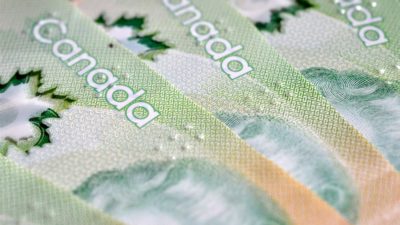It doesn’t bode well for investors who have money invested in companies that are facing adversity. However, on the plus side, it is during adverse times that one can see the strength of a company’s management.
Portfolio
Boardwalk REIT (TSX:BEI.UN) owns and operates almost 33,000 residential units across more than 200 communities. At the end of the second quarter Boardwalk had 60.3% of its apartments in Alberta, 14% in Saskatchewan, 7.7% in Ontario, and 18% in Quebec.
In the second quarter the REIT earned 67.1% of its net operating income (NOI) from Alberta, 13.3% from Saskatchewan, 5.5% from Ontario, and 14.1% from Quebec.
Investors should note that Boardwalk’s Albertan portfolio is concentrated in Edmonton and Calgary, from which it earned 40.8% and 21.4% of its NOI, respectively, in the second quarter.
Strategy
Despite the continued weakness in Alberta’s economy, Boardwalk maintained a high portfolio-occupancy rate of 96.6% in the second quarter.
The management has a rental revenue strategy to focus on occupancy levels, market rents, and suite-specific incentives. Although Boardwalk’s average rent is slightly below the market rent, the REIT posted much higher occupancy rates than the market.
Specifically, Boardwalk’s average monthly rents decreased 5.6% from $1,150 in June 2015 to $1,086 in June 2016. Similarly, its average occupied rents for the period decreased 5.1% from $1,183 to $1,123. Comparatively, the average market rents for June 2016 have decreased 5% from $1,193 to $1,133.
Going forward
Sam Kolias, the chairman and CEO of Boardwalk REIT said in the second-quarter report that historically, rents in Alberta tend to increase by 3-4% per year, and that it should revert back to the mean as housing supply and demand rebalance.
This rebalancing process doesn’t happen in a heartbeat. So, investors should not expect Boardwalk to recover quickly.
In fact, management has lowered its NOI growth projections from -6% to -3% in Q1 to -10% to -5% in Q2 for this year. At the same time, management lowered its funds from operations (FFO) per-unit guidance of $3.40-3.55 per unit to $3.05-3.20, 10% lower (using the midpoints), which would imply an FFO payout ratio of about 72%.
Valuation and distribution
With the almost 6% pullback after the release of the second-quarter report, at about $50 per unit, Boardwalk trades at roughly a 21% discount from its net asset value (NAV) per unit of $63.63 at the end of June. Delightfully, its NAV per unit increased 2.4% from the end of last year, but its units are also 5.4% higher year to date.
Boardwalk pays a monthly distribution of 18.75 cents per unit, which equates to an annual payout of $2.25 per unit. This is a 4.5% yield that’s sustainable by the company’s projected FFO.
Conclusion
If you’re investing in Boardwalk, you need to accept that its core operations are in Alberta and, as a result, the REIT’s business performance is more or less tied to the boom or bust of the energy industry.
Investors who believe in the long-term demand for energy should observe the REIT for the next few quarters and potentially average in on price pullbacks to capture a higher yield. The low $40s would especially be a good place to start averaging in.







